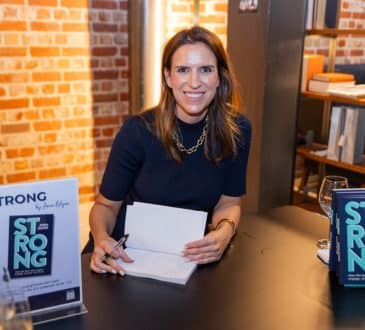How Master Game Players Manage Their Departures

It is not surprising to me that CEOs are joining the Great Resignation and leaving jobs in record numbers. Chiefs are making personal decisions about their futures and in some cases, decisions are being made for them.
In my 35 years in government, business, and philanthropy, I have helped organizations to both survive and thrive. I earned my stripes leading organizations through the dot.com bust, 9/11, the Great Recession, and now Covid-19. Working at the Reagan White House and a Fortune 500 company in my 20s taught me that successful leaders are those who can play a masterful game of chess.
Positions are thoroughly studied. Moves are selected through calculation and constant assessment. Each decision is made with a recognition of the trade-offs. Sustainability and success of the organization is the end game. The institution is king.
As CEO, you are the most powerful player for only a moment in time and vulnerable to competitors and unintended consequences. Chess master Rudolph Spielmann noted, “The beauty of a game of chess is usually assessed according to the sacrifices it contains.” What you keep and what you let go are reflective of your strategy and will define the results of your tenure.
I have recently managed my own transition from CEO of a medical research organization at which I completed an 83% restructure only to find myself leading the newly redesigned organization through a pandemic. I ended on a high note by handing over the mantle of leadership in a manner that allows the organization to live on and be carried out by those with whom I partnered, mentored, and trained.
Here are a few strategic moves that helped me win the game.
Watch the Whole Game Board: As you contemplate your departure, sometimes it is easy to become so focused on what is in front of you that you forget to lift your head and see the greater changes going on around you. As you were executing a turnaround or positioning your company for the next phase of growth, the industry in which your organization operates was also changing.
The key to any departure is identifying the optimal moment for you and the organization within your changing environment. Assess the actions of those around you, so you know when to make the move. Recognize that people—the board, staff, customers—may say one thing but their actions shine a light on their true intent and provide early warning signals as priorities subtly shift in the background.
Value All Your Pieces: Work with your senior team and board leadership to develop a comprehensive decision tree that factors in a variety of variables. Think about anticipated attrition and analyze which revenue generating activities have the greatest probability of success.
Prepare the organization for the internal domino effect after you leave. War game scenarios so you can help the next set of leaders anticipate the consequences as pieces are moved on and off the board. The questions each CEO should be asking are “what are the internal risks,” and “what actions will be triggered as the company pivots to address externalities.” As things change, some individuals will put their own self-interest above the organizations or take actions detrimental to the organization. So, ensure you spend time with the heir apparent, providing them with as much background they require to protect critical assets—people and projects.
Manage your legacy and be prepared to let go: What you build speaks to your impact on the world around you. How you build it speaks volumes about your leadership style. Beyond the results on paper, how you treated people, how you reacted to success or failure, who you lifted up along the way, are all part of the legacy you leave as a leader – humility, empathy, and generosity. Think about the three words used to describe you after you leave.
My father, the CEO of an organization that went through many publicized highs and lows, taught me two relevant things. First, you’ve got to be ready to walk out the door at any time. You might want to do it by choice, or you might be forced out. In either case, you want to make sure the organization thrives after you because you’ll be judged either way. And watch out for those who helped you be successful, as you may be able to position your peers and mentees for their next big opportunity.
Set up your game board with strong processes and decision matrices to help your knights learn quickly how to succeed. Their north star will be keeping commitments to customers, employees, and communities to stay the course, adapt in the moment and do better with less—a workstyle which will likely be a necessity into 2023.
Written by Lisa Gable.
Add CEOWORLD magazine to your Google News feed.
Follow CEOWORLD magazine headlines on: Google News, LinkedIn, Twitter, and Facebook.
This report/news/ranking/statistics has been prepared only for general guidance on matters of interest and does not constitute professional advice. You should not act upon the information contained in this publication without obtaining specific professional advice. No representation or warranty (express or implied) is given as to the accuracy or completeness of the information contained in this publication, and, to the extent permitted by law, CEOWORLD magazine does not accept or assume any liability, responsibility or duty of care for any consequences of you or anyone else acting, or refraining to act, in reliance on the information contained in this publication or for any decision based on it.
Copyright 2024 The CEOWORLD magazine. All rights reserved. This material (and any extract from it) must not be copied, redistributed or placed on any website, without CEOWORLD magazine' prior written consent. For media queries, please contact: info@ceoworld.biz
SUBSCRIBE NEWSLETTER








